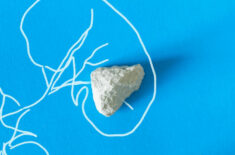Overview
Age spots (also known as brown spots, dark spots, liver spots, and sunspots) are harmless forms of hyperpigmentation and/or discoloration due to sun exposure.
They usually appear in your mid-30’s and 40’s and are most noticeable in fair skin.
You can treat age spots with prescription creams containing bleach, retinoids, and steroids and with procedures like laser and light therapy, cryotherapy, chemical peels, and microdermabrasion.
If you prefer to avoid harsh chemicals and expensive treatments and want to opt for a natural way to even skin tone then aromatherapy and natural oils may be an option.
Essential oils as natural remedies for healthy skin
Essential oils (EOs) are highly concentrated plant extracts that contain hundreds of active compounds known to create nourishing and balancing effects on the body and skin.
They can be used as home remedies for a variety of skin conditions like:
- Soothing eczema
- Psoriasis relief
- Shingles
- Treating warts
- Healing bug bites
- Helping sunburns and skin burns
Thanks to their potent anti-inflammatory properties, essential oils can have a healing effect on skin cells no matter your skin type.
You can incorporate EOs into your daily skin care routine depending on your needs:
- Antiaging essential oils like lavender, rosemary, sandalwood, and carrot seed oil can help soften fine lines by fighting the very free radicals that cause aging skin.
- Tea tree essential oil and peppermint are especially effective for pimples and blemishes.
- Oils like frankincense are helpful for acne scars and stretch marks.
EOs like grapefruit and clary sage have astringent effects and can help oily skin reduce the amount of sebum production.
Read on to find out which are the best EOs for evening skin tone and reducing the appearance of dark spots.
The five best essential oils for age spots & sunspots
Frankincense oil




Research indicates that Frankincense can help reduce dark spots, reduce scar visibility, improve complexion, and can support cell turnover. (1)
Pomegranate oil



A 2014 review report published in Advanced Biomedical Research found that pomegranate oil has strong antioxidant properties that help reduce inflammation as well as reduce age spots and skin cancer. (2)
Geranium oil


This oil helps your skin retain moisture better so it’s very hydrating which may improve the appearance of hyperpigmentation. It also has a skin toning effect.
Lemon oil
This powerful citrus oil can have a clarifying effect and is chock-full of nourishing antioxidants and vitamin C, but beware that lemon oil can be phototoxic, which means that you may experience a reaction or pigmentation if exposed to direct sunlight. It’s best to apply all citrus oils at night and avoid sun exposure.
Ylang-ylang oil


A 2015 study published on Evidence-Based Complementary and Alternative Medicine found ylang ylang to exhibit protective properties against hyperpigmentation. (3)
How to use essential oils for age spots (sun spots)
The most effective way to use EOs for skin pigmentation and tone correction is to mix them with nourishing carrier oils such as:
Not only will this hydrate normal to dry skin, but it will also help the active compounds seep deeper into the skin for maximum absorption.
Always dilute EOs with a carrier oil before applying them directly to your skin.
Stick to 2-3 drops of EO per 1 teaspoon of carrier oil.
Follow the recipe below to create your own rejuvenating serum.
Safety concerns
EOs are highly concentrated and potent.
A little goes a long way.
Be mindful of phototoxic oils like all citrus oils.
Use them with care and caution because you may experience an allergic reaction or irritation if you’re exposed to the sun.
It’s best to use citrus oils on your face at night for this reason.
If you experience an adverse reaction, discontinue use immediately.
To be on the safe side, perform a patch test on your arm before applying the oils to your face.
If you do not react after 24 hours, then proceed.
Check the contraindications for each oil you’ll use as some oils aren’t suitable for babies, young children, or pregnant women.
Always choose certified organic, 100%, therapeutic grade oils to avoid adulterated products or exposure to harmful chemicals and potential side effects.
Keep in mind that oils don’t work the same for everyone.
You might need to test and experiment with different oils to find the ones that best work for your skincare needs.
EOs for age spots are most effective when used daily, consistently, and for many weeks or months to see visible results.
If you’d rather have faster results, then other options like prescription creams and procedures may be a better choice for you.
Essential Oil Recipes: A DIY Nourishing & Rejuvenating Evening Face Serum
Essential oil blends are more potent and effective than single-use oils alone.
This DIY serum is full of only natural ingredients that can revitalize your skin if used every evening or night as part of your regular skincare routine.
Apply the serum after you’ve applied your moisturizer to seal in the hydration.
Keep in mind that the serum contains lemon oil, so we don’t recommend using it during the day as it can make age spots worse or irritate your skin.
Evening Face Serum For Better Skin Tone
Fill a small dark glass bottle with a dropper top with the following:
- 7 drops of frankincense essential oil
- 7 drops of lavender essential oil
- 7 drops of geranium essential oil
- 7 drops of ylang-ylang essential oil
- 7 drops of pomegranate essential oil
- 7 drops of lemon essential oil
- 2 tablespoons argan oil
- 2 tablespoons of jojoba oil
- 2 tablespoons of fractionated coconut oil
- 2 tablespoons of vitamin E oil
REFERENCES:
- http://www.znaturforsch.com/ac/v58c/s58c0230.pdf
- http://www.advbiores.net/article.asp?issn=2277-9175;year=2014;volume=3;issue=1;spage=100;epage=100;aulast=Zarfeshany
- https://www.ncbi.nlm.nih.gov/pmc/articles/PMC4534619/













